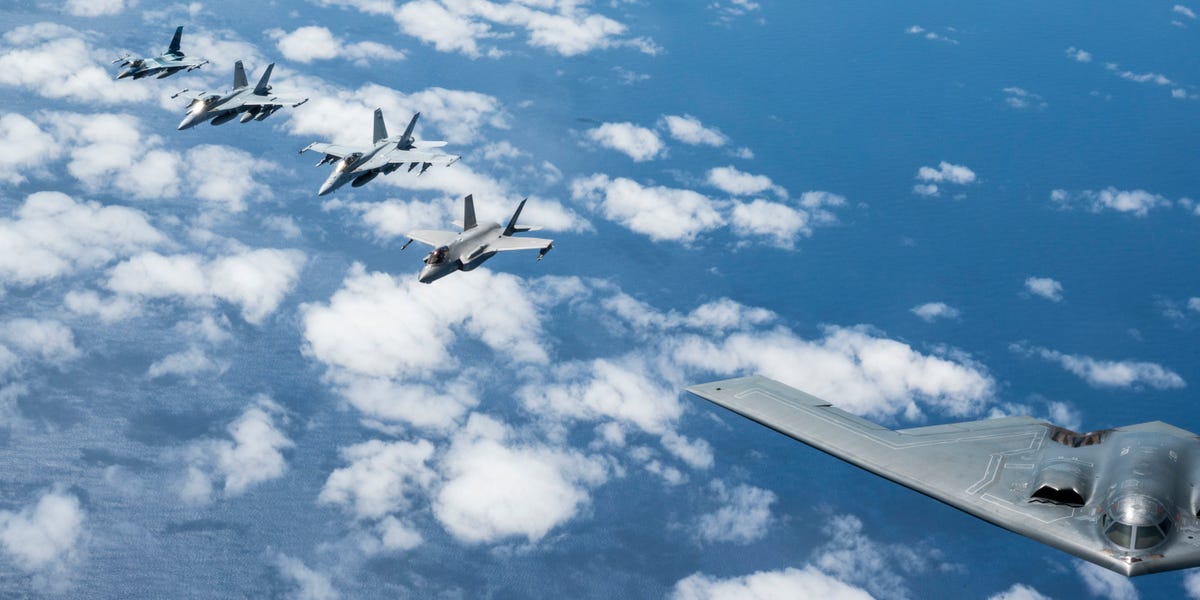
The US Air Force is planning a large-scale exercise focused on quickly building up airpower in the Western Pacific, a top general shared recently. The plan reflects the service’s concerns over readiness for a potential conflict against an adversary like China.Gen. David Allvin, the chief of staff of the Air Force, discussed some details about the service’s new REFORPAC training, scheduled summer 2025, at a talk hosted by the Hudson Institute think tank on Friday.REFORPAC refers to the Cold War-era “Return of Forces to Germany” exercises, which saw the US and its NATO allies repeatedly test how quickly and effectively their militaries could mass combat capability inside Germany should conflict arise.During the recent presentation on the coming drills, Allvin said that US forces would deploy from Alaska, Hawaii, Guam, and locations across the continental US for around a 14-day exercise somewhere in the Western Pacific.
U.S. Air Force F-22A Raptors assigned to the 27th Expeditionary Fighter Squadron along with Royal Australian Air Force F-35A Lightning IIs from No 75 Squadron and a KC-30A Multi Role Tanker Transport aircraft from No. 33 Squadron, demonstrate a show of force by conducting an elephant walk at RAAF Base Tindal, Australia.
U.S. Air Force photo by Staff Sgt. Spencer Tobler
The general explained that the REFORPAC exercise is one way the Air Force plans to return to the type of large-scale exercises that US conducted during the Cold War. He added that this was a necessity as the US shifts its focus to great power competition with China.
It’s unclear which aircraft would be involved and how many, but Allvin’s remarks indicate it would be a substantial exercise. He said it would be incorporated into the bilateral Talisman Sabre event since US airpower would be supported by allies and partners.Allvin argued at the Hudson event last Friday that “we need to get back to those large-scale exercises, and to their credit, many of the wing level and numbered Air Force level and even some of the MAJCOM (major command) level, they have started to organically expand their exercises.”Allvin also noted that the priority for US Air Force aircraft was to be prepared, at a moment’s notice, to fight in a heavily contested environment where nothing is safe against a highly capable enemy, such as China.
A B-1B Lancer assigned to the 37th Expeditionary Bomb Squadron flies in support of a Bomber Task Force mission during sunrise at Andersen Air Force Base, Guam.
U.S. Air Force photo by Airman 1st Class Audree Campbell
REFORPAC is focused on a key challenge when looking at the vast expanses of the Pacific, one that must be overcome before the fighting can even begin. US airpower in the region is scattered across far-flung bases, and it would have to be quickly brought into region were a fight to break out.The big exercise coming next summer is an opportunity to address that issue, giving the Air Force the opportunity to work out key deployment issues in, as Allvin said, “a realistic scenario.”The US and some regional allies have previously carried out other tests of their forces’ capabilities in the Pacific region. Exercise Mobility Guardian 2023, a massive two-week drill that involved 70 aircraft and 3,000 personnel, included operations across the Pacific region, including in Australia and Japan.Allvin explained Friday that the 2023 iteration had provided the Air Force with many lessons for its future training, helping it to “understand those complexities” related to getting forces deployed to the Pacific.






